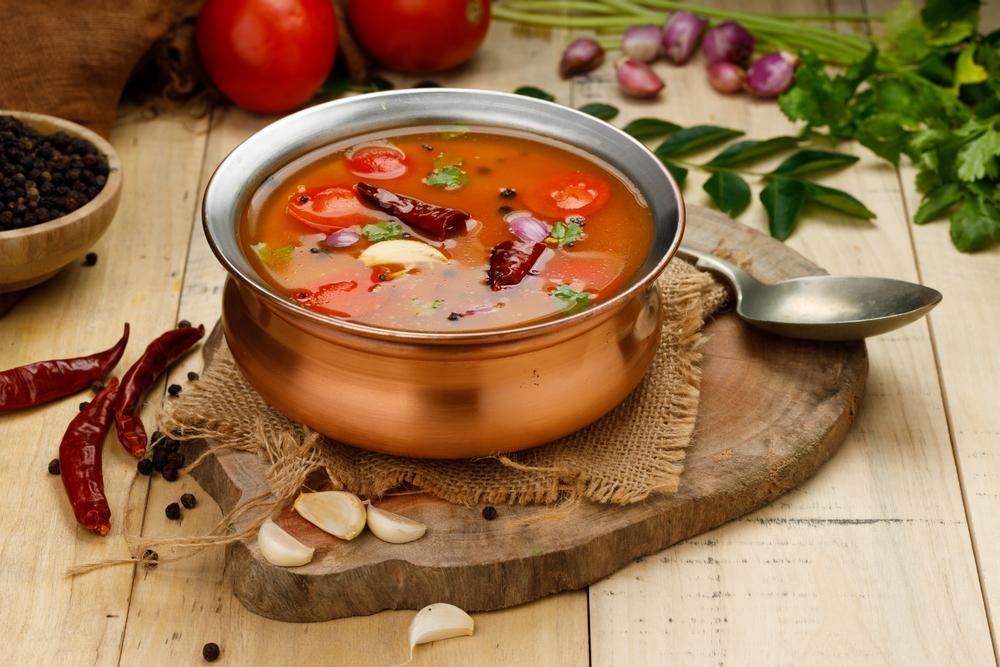The brief, glorious moment when tomatoes are everywhere marks the culinary apex of summer. This drawn-out, tomato-ey solstice is especially fleeting for heirloom tomatoes, the high-maintenance wing of the tomato clan. Too watery and delicate to preserve, heirlooms can only be enjoyed fresh. Which means they must be enjoyed now.
Heirlooms have shorter shelf lives than “normal” hybrid tomatoes, and they are harder to grow and less productive, making them more expensive. The heirlooms at my farmers market are worth every penny. I’ve been a big spender all summer, and finally my own patch is starting to ripen.
I’ve got Ox Heart, Black Krim, Brandywine, Thirsty Girl, White Peach, Striped German, and others. These aren’t the lipstick-red, perfectly round, normal-looking slicers that you’d put on a sandwich, or the dense, dry paste tomatoes that in a few weeks I’ll simmer into large batches of sauce. Heirlooms come in as many shapes as clouds, as many colors as the rainbow, with mildly tangy flavors and sweet, earthy aromas.
I keep my heirlooms closer than my friends and enemies, organized like perishable jewels, usually on a large plate but not in a pile, keeping track of which ones are soft. I don’t refrigerate or cook my heirlooms. They are for room-temperature enjoyment only.

Anatomy of a Classic
I can’t think of any more delicious way to enjoy a summer heirloom—and summer itself—than a plate of caprese, the Italian salad that pairs a slice of tomato with a slice of mozzarella and a leaf or two of basil. These accompaniments flatter the heirloom, as lime and salt complete a shot of tequila, and are just as intoxicating.Beyond this three-ingredient caprese quorum, most renditions will include salt, olive oil, and balsamic vinegar, either red or white. White balsamic is made from white grapes and lately, because of trademark issues, goes by White Italian Condiment. Whatever we call white balsamic, I prefer it to the red. It’s just as aromatic, but less dominant.
And call me crazy, but I prefer tucking the basil between the tomato and the cheese. On top of the tomato, that basil leaf deflects the oil, salt, and vinegar, and in so doing, it blocks the proper flavor from developing.
After a weeks of studying, preparing, consuming, and obsessing about caprese, my garden was depleted, and I went to the farmers market to buy more ingredients. While gathering bunches of basil from a vendor I barely knew named Jamie, I heard him mention that I looked like a man with caprese on his mind.
As Jamie was so tuned in to the caprese wavelength, I asked how he serves it at home.
He mixes purple and green basil on alternate pieces of caprese, along with different colored tomatoes. It makes a more colorful plate, he says. He’s also a stickler for balsamic reduction, rather than the straight vinegar. He likes the syrupy consistency of balsamic reduction, how it sticks to the cheese and tomatoes and doesn’t so easily run off.
To make your own balsamic reduction, simply heat a quantity of red or white balsamic in a heavy-bottomed saucepan until it’s reduced by at least half. Some recipes call for sweetening the reduction, but I find it sweet enough.
But if there is a bit of minced garlic, or thin-sliced onion, or even a caper or two, I won’t complain. Sometimes I’ll place a peach atop Mt. Caprese.
It’s usually served as some kind of towering pile, but you can also chop the basil, mozzarella, and tomato into utensil-sized bits and sprinkle with salt, olive oil, and some kind of balsamic—red or white, vinegar or reduced.
Heirloom Tomato Juice Salad
If you don’t have a mozzarella budget, or if you’re a vegan, or even if you’re just someone who needs a new way to express your heirloom addiction, here is a salad called Heirloom Tomato Juice.So juicy it’s drunk as much as it’s eaten, the salad is as refreshing as a bowl of gazpacho, and requires only a fraction of the prep time. It’s a salad that sips like a soup, and a great way to use your heirlooms that are too ripe for anything else.
- 2 English cucumbers, sliced into 1/2-inch rounds
- 3 teaspoons salt, divided
- 1/4 of a large sweet onion, thin-sliced to 1/8-inch or less
- 3 cups chopped heirloom tomatoes
- 1/2 cup olive oil
- 1/4 cup balsamic vinegar
Wait about 20 minutes for the juices to get flowing. It happens so fast, you can see it with the naked eye. Serve in bowls. When the chunks are done, sip the juice from the bowls.





